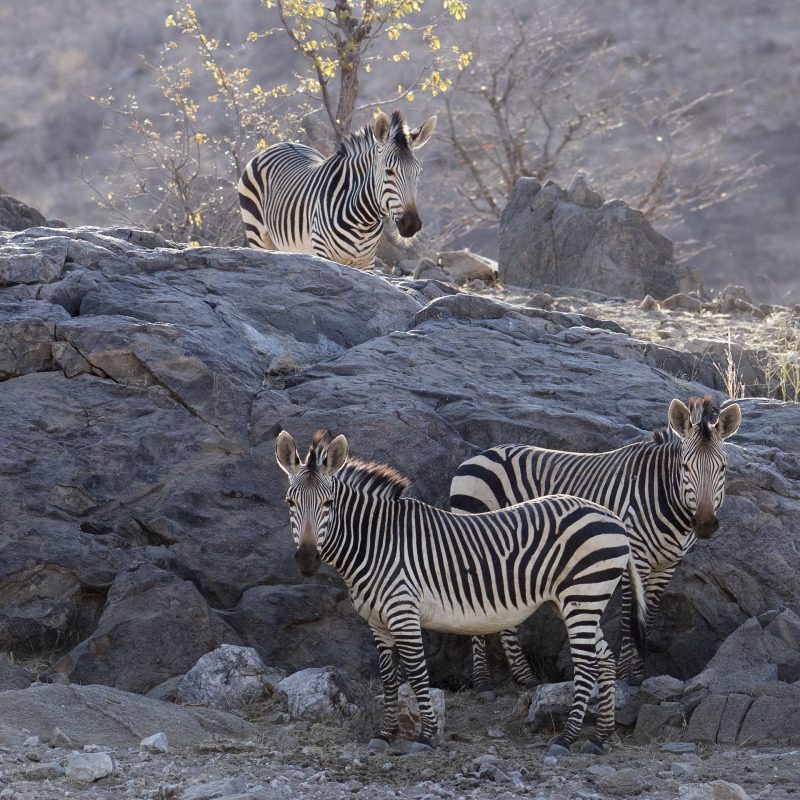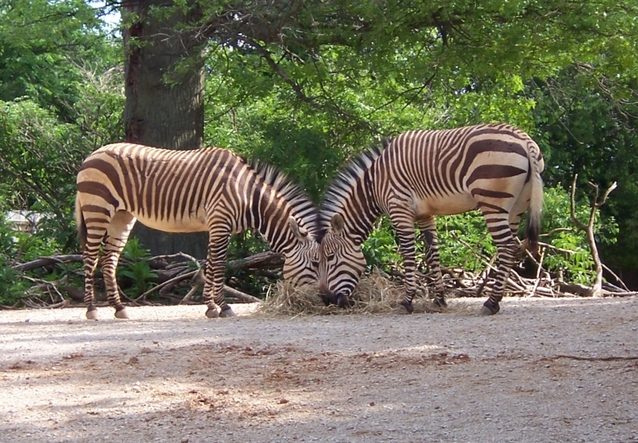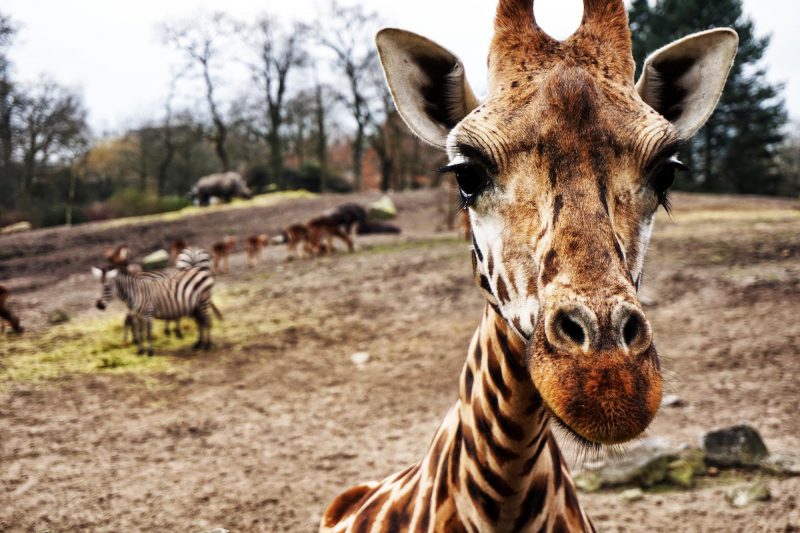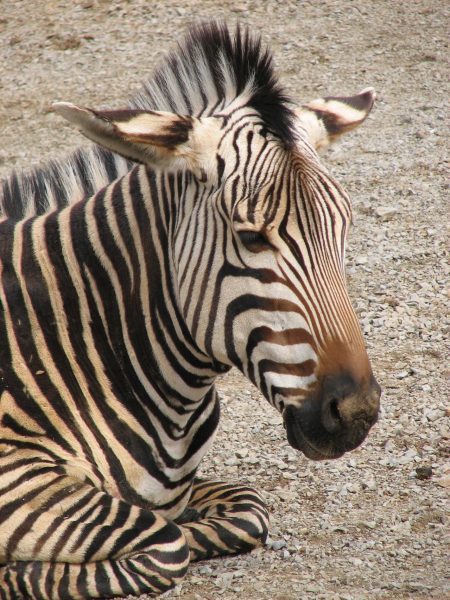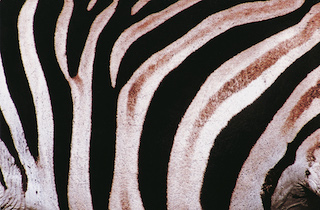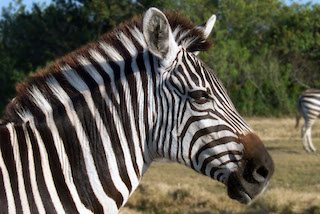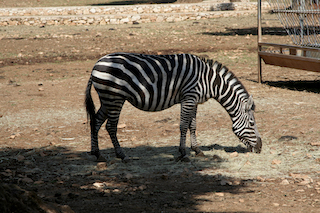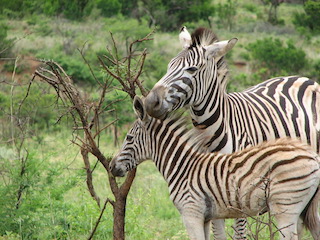Mountain Zebra s In The Rugged Terrain
Mountain zebra is a haunting icon of Africa. It is the most social species of all the zebras and are grazers like other zebras. They are mainly active early in the morning and late afternoon until sunset. They visit mineral licks, especially during the summer. But unlike other zebras they have a distinct feature. It is the presence of dewlap on the throat or a square flap of skin. Their pointed ears reach 8 inches in length and their manes of short hair stand upright from their necks. Mountain zebras take part in mutual grooming and usually take a dust bath daily.
Grassy cliff lovers
Mountain zebras occur in South West Africa, Namibia and south-western Angola. They live in rugged, broken mountainous slopes and plateaus. They prefer cliff areas with a rich range of grass and perennial water sources. It is a good climber and has hard and pointed hooves apt for climbing steep terrain. They have four one-toed hoofs.
Promiscuous breeding habits
Mountain zebra s live in breeding herds consisting of one stallion, up to 5 mares and their young. This social structure remains stable over many years. Females usually stay in a pack for life. Surplus males live in non-breeding groups sometimes including young fillies too. Individuals sometimes establish a new breeding herd. Or they may displace the dominant male to take over its existing herd. New stallions court with the females of the new herd for up to three years before the mares accept them.
Style of stripes
Mountain zebra has thin vertical lines on its neck and torso and broad flat lines on its haunches. The strips stay up to their manes. Under the belly, the stripes are white with a central black stripe. A unique feature is the grid pattern of tapered bands across the rump.
Potential primary threats
Mountain zebras are hunted for skin and food. They are in competition with livestock for grass due to loss of habitat to agriculture. These are the primary threats to Mountain zebras. There is also a potential threat of cross-breeding of the subspecies losing the genetic diversity.
Concerted conservation efforts
Mountain zebras have suffered massive population declines over the past century. Nevertheless, its population is now stabilizing due to concerted conservation efforts at the local, national and international level.
Two separate subspecies
The Hartmann’s Mountain zebra and the Cape mountain zebra are the two species of mountain zebra. Both the species are allopatric, meaning that occupy separate, non-overlapping areas. Some conservationists believe that the Hartmann’s mountain zebra and Cape mountain zebra are different species because of their habitat differentiation. However, genetics proves that there is a link between the two.
Cape mountain zebra
The South African Parliament once referred Cape mountain zebra as donkeys in football jerseys. It is the smallest living zebra and the most restricted geographically. They must drink water every day. The foals leave the herd either between one to three years of age or three months after a sibling’s birth.
Inhabit mountain ranges
Cape mountain zebras are endemic to South Africa. Cape mountain zebras inhabit all the mountain ranges of the Cape Province of South Africa. They congregate up to a couple of thousand meters above sea level but move to lower altitudes in the winter. They occur in Mountain Zebra National Park, the Kamanassie Mountains, the Karoo Nature Reserve, the Baviaanskloof Wilderness Area and Gamka Mountain Reserve. Additional populations exist in ten further protected areas. A comprehensive database on its status is monitored and maintained by South Africa National Parks and Cape Nature Conservation.
Numbers are climbing
Cape mountain zebras came very close to extinction in 1950 with their numbers dropping to a mere 91 individuals. But it was saved through the establishment of wildlife reserves and national parks. Thankfully, their numbers climbed back to around 1,200 in 1998.
Collaborative conservation measures
There has been a dramatic increase in the populations of Cape mountain zebras in the last 50 years due to the conservation initiatives. Its population is increasing at a rate of 9.6% per year. Collaborative measures are ongoing by many parties committed to saving this species. For example, the largest privately owned herd of 20 Cape mountain zebras was sold to Bushmans Kloof Wilderness Reserve making it a total of 30 animals held at the reserve. The current conservation target is to build up to a total of 2,500 animals to ensure their long-term survival.
Hartmann’s mountain zebra
The zig-zag forward grazing pattern of a Hartmann’s mountain zebra follows the contours of the terrain. They have fast-growing hooves. During the wet season, they can go on two or more days without drinking water. The foals have a high survival rate because the adults actively defend them against predators. The mares expel their foals from the herd between 14 to 16 months of age.
Fragmented distribution range
Hartmann’s mountain zebras have a fragmented distribution across southern Angola, coastal Namibia and the Namaqualand region of South Africa. They inhabit the high zone between the central plateau in Namibia and the Namib Desert extending into south-western Angola. In Namibia, Hartmann’s zebras occur in protected areas, in smaller parks and on communal lands totaling an area of 7,000km. The establishment of water points in Namibia has allowed them to occupy previously unsuitable habitat.
Scarcity of resources
The grazing ground is becoming particularly scarce in Namibia due to lack of rains. Hence they live in direct conflict with the livestock. Farming activities such as fencing prevent access to water. Another threat to the Hartmann’s mountain zebra is poaching for food. This has increased rapidly due to the weak economy and scarce resources. Zebra meat offers a large amount of food. In Angola, the situation has been exacerbated by war, in which many people have been in dire need of food.
Namibia’s protection task
The Etuis Foundation, a non-profit organization, has been established in Namibia as an effort to conserve, protect and increase the numbers of Hartmann’s mountain zebras. To help save this species, 1937 saw the establishment of the Mountain Zebra National Park. Information is limited as to the current trend of the population of Hartmann’s Mountain zebra. But in 1998 it numbered 25,059 in Namibia and fewer than 500 in South Africa. It is now a protected species in Namibia. In South Africa, more than 80% are owned by private landowners.
5 Frequently Asked Questions About Mountain Zebra

